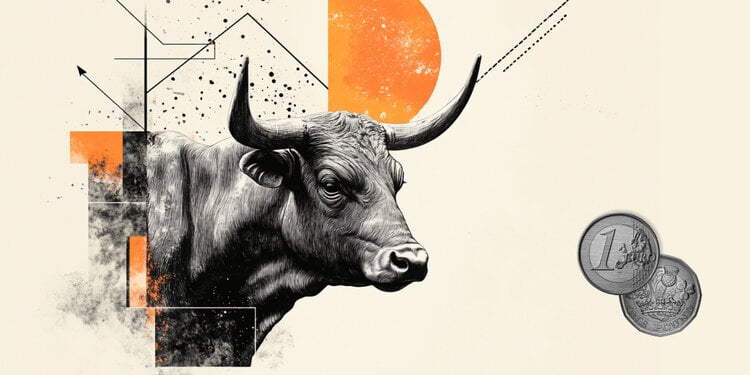- USD/CAD is down towards 1.3545 in early Asian trading on Wednesday.
- The US ISM manufacturing PMI came in at 47.2 in August versus 46.8 previously, below estimate.
- The BoC is likely to cut rates at its September meeting on Wednesday.
The USD/CAD pair is trading lower around 1.3545 during the Asian session on Wednesday. The weaker-than-expected US ISM Purchasing Managers’ Index (PMI) drags the Dollar lower. The Bank of Canada (BoC) interest rate decision will be the highlight later on Wednesday, with a 25 basis points (bps) rate cut expected.
Business activity in the US manufacturing sector continued to contract, albeit at a milder pace in August. The US ISM manufacturing PMI rose from an eight-month low in July of 46.8 to 47.2 in August. This figure was below the market consensus of 47.5 and recorded the lowest reading since November.
Caution ahead of the much-awaited US Non-Farm Payrolls for August on Friday could provide some support to the US Dollar (USD) and limit the pair’s downside. This event will be closely watched as it could offer some clues as to how much the US Federal Reserve (Fed) will cut interest rates. Financial markets have priced in around a 62% probability of a 25 basis points (bps) rate cut by the Fed in September, while the odds of a 50 bps reduction stand at 38%, according to the CME FedWatch tool.
As for the Loonie, the BoC is widely expected to deliver a third consecutive interest rate cut on Wednesday amid easing inflationary pressure in the Canadian economy. Investors see the Canadian central bank cutting its benchmark interest rate by a quarter of a percentage point to 4.25%, followed by several more reductions throughout this year and 2025. “The Bank of Canada is likely to interpret (last week’s GDP) data as support for maintaining its easing bias, with three more quarter-point cuts expected by year-end,” noted TD’s Maria Solovieva.
Meanwhile, the further decline in crude oil prices continues to undermine the commodity-linked Canadian Dollar (CAD). It should be noted that Canada is the largest exporter of oil to the United States (US), and lower crude oil prices tend to have a negative impact on the value of the CAD.
Canadian Dollar FAQs
The key factors determining the Canadian dollar (CAD) are the level of interest rates set by the Bank of Canada (BoC), the price of oil, Canada’s main export, the health of its economy, inflation and the trade balance, which is the difference between the value of Canadian exports and its imports. Other factors include market sentiment, i.e. whether investors are betting on riskier assets (risk-on) or looking for safe assets (risk-off), with risk-on being positive for the CAD. As its largest trading partner, the health of the US economy is also a key factor influencing the Canadian dollar.
The Bank of Canada (BoC) exerts significant influence over the Canadian dollar by setting the level of interest rates that banks can lend to each other. This influences the level of interest rates for everyone. The BoC’s main objective is to keep inflation between 1% and 3% by adjusting interest rates up or down. Relatively high interest rates are generally positive for the CAD. The Bank of Canada can also use quantitative easing and tightening to influence credit conditions, with the former being negative for the CAD and the latter being positive for the CAD.
The price of oil is a key factor influencing the value of the Canadian dollar. Oil is Canada’s largest export, so the price of oil tends to have an immediate impact on the value of the CAD. Generally, if the price of oil rises, the CAD rises as well, as aggregate demand for the currency increases. The opposite occurs if the price of oil falls. Higher oil prices also tend to lead to a higher probability of a positive trade balance, which also supports the CAD.
Although inflation has traditionally always been considered a negative factor for a currency, as it reduces the value of money, the opposite has actually occurred in modern times, with the relaxation of cross-border capital controls. Higher inflation typically leads central banks to raise interest rates, which attracts more capital inflows from global investors looking for a lucrative place to store their money. This increases demand for the local currency, which in Canada’s case is the Canadian dollar.
The released macroeconomic data measures the health of the economy and can have an impact on the Canadian Dollar. Indicators such as GDP, manufacturing and services PMIs, employment and consumer confidence surveys can influence the direction of the CAD. A strong economy is good for the Canadian Dollar. Not only does it attract more foreign investment, but it can encourage the Bank of Canada to raise interest rates, which translates into a stronger currency. However, if the economic data is weak, the CAD is likely to fall.
Source: Fx Street
I am Joshua Winder, a senior-level journalist and editor at World Stock Market. I specialize in covering news related to the stock market and economic trends. With more than 8 years of experience in this field, I have become an expert in financial reporting.







